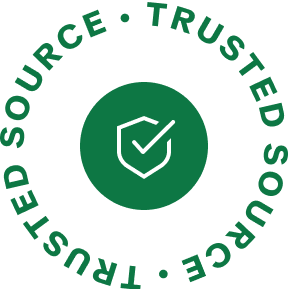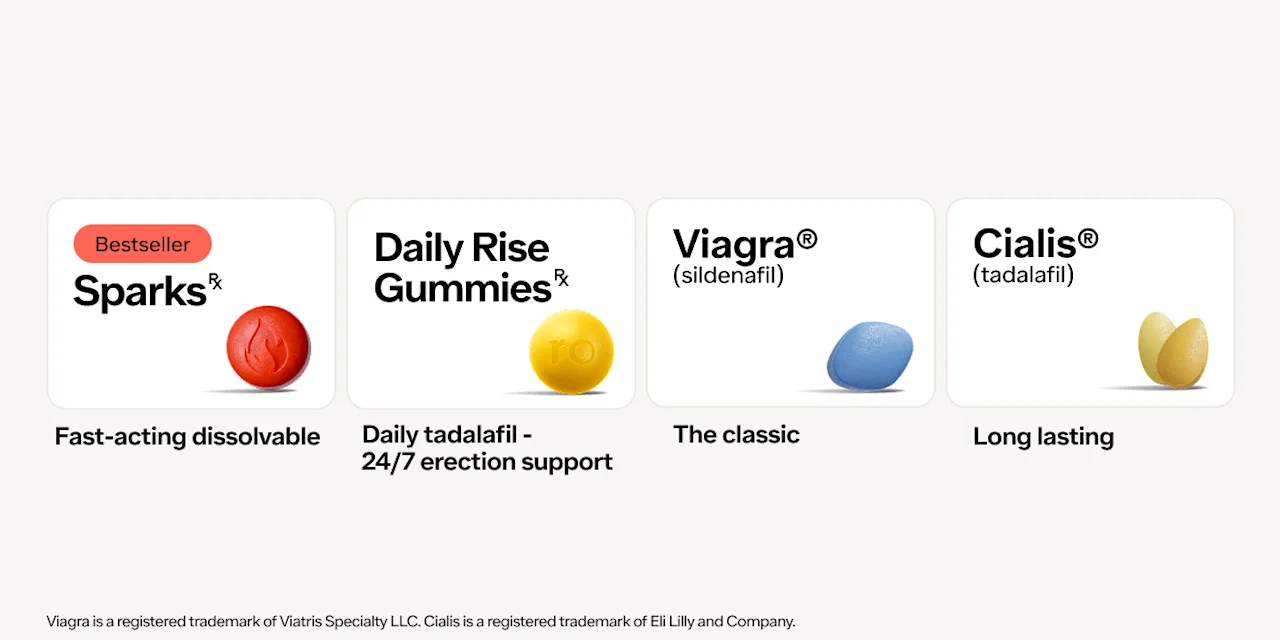Key takeaways
Tadalafil can interact with several medications and substances, especially those that affect blood pressure or liver metabolism.
You should never combine tadalafil with nitrates or guanylate cyclase stimulators, as this may cause dangerously low blood pressure.
Alcohol and alpha-blockers may also intensify tadalafil’s blood pressure-lowering effects, leading to dizziness or fainting in some cases.
Some medications, like certain antifungals and antibiotics, may raise or lower tadalafil levels in the body, changing how well it works or how long it lasts.
Health conditions like heart disease, liver or kidney problems, and low blood pressure may influence how safe tadalafil is for you, so it’s important to review your full medical history with a healthcare provider.
Here's what we'll cover
Here's what we'll cover
Here's what we'll cover
Key takeaways
Tadalafil can interact with several medications and substances, especially those that affect blood pressure or liver metabolism.
You should never combine tadalafil with nitrates or guanylate cyclase stimulators, as this may cause dangerously low blood pressure.
Alcohol and alpha-blockers may also intensify tadalafil’s blood pressure-lowering effects, leading to dizziness or fainting in some cases.
Some medications, like certain antifungals and antibiotics, may raise or lower tadalafil levels in the body, changing how well it works or how long it lasts.
Health conditions like heart disease, liver or kidney problems, and low blood pressure may influence how safe tadalafil is for you, so it’s important to review your full medical history with a healthcare provider.
Tadalafil interactions include nitrates, alpha-blockers, and certain antifungals or antibiotics. These combinations can cause low blood pressure or increase side effects. Alcohol and other blood pressure medications may also intensify tadalafil’s effects. Always review your medications with a provider before starting tadalafil to avoid harmful interactions.
Tadalafil (the active ingredient in Cialis) is a widely used treatment for erectile dysfunction (ED). In this guide, we’ll walk through the most important interactions to know about, so you can use tadalafil safely.
Tadalafil (Cialis) drug interactions at a glance
If you’ve recently started tadalafil, you may be wondering, “What can you not take with tadalafil?” You should not take tadalafil with nitrates or guanylate cyclase stimulators. These combinations can cause low blood pressure. Avoid combining tadalafil with other ED medications unless prescribed. Tell your provider about all of the medications you’re on before starting tadalafil to prevent serious interactions.
Substance or drug type | Interaction risk | What to know |
Nitrates | Do not combine | Can cause a dangerous drop in blood pressure. |
Guanylate cyclase stimulators | Do not combine | Serious risk of low blood pressure. |
Alpha-blockers | Use with caution | May increase dizziness or fainting; timing or dose changes may help. |
Antihypertensives | Monitor closely | Usually safe, but can slightly lower blood pressure. |
CYP3A4 inhibitors | Dose adjustment may be needed | Can raise tadalafil levels and increase side effects. |
CYP3A4 inducers | May reduce effectiveness | May make tadalafil less effective; dose changes might be needed. |
Alcohol (heavy drinking) | Limit intake | Can raise the risk of dizziness and low blood pressure. |
Other PDE5 inhibitors | Avoid combining unless prescribed | May increase side effects; only use together under medical supervision. |
Antacids | Minor effect on timing | May delay onset slightly, but doesn’t affect how much is absorbed. |
Nitrates
You should not take tadalafil with nitrates. This combination can cause a sudden and dangerous drop in blood pressure.
According to studies, tadalafil can make nitrates work even stronger, which can, in turn, lower your blood pressure to unsafe levels. Nitrates are often used for chest pain (angina) and include medications like nitroglycerin, isosorbide dinitrate, and isosorbide mononitrate. Nitrates are also found in some illicit drugs such as amyl nitrate, butyl nitrate, or nitrite ("poppers").
If you’ve taken Cialis and experience chest pain that feels like angina (pressure, squeezing, or pain in your chest), do not take nitroglycerin or other nitrates on your own. You need to wait at least 48 hours after your last dose of Cialis before nitrates can be safely considered for treating chest pain—and even then, only under close medical supervision. If this happens, seek help right away and let the medical team know you’ve taken Cialis so they can treat you safely.
Guanylate cyclase stimulators
Do not take tadalafil with guanylate cyclase stimulators like riociguat. This combination can cause a serious drop in blood pressure.
Both medications work using similar mechanisms to relax blood vessels. Taken together, they can lower your blood pressure to unsafe levels. Riociguat is used to treat pulmonary hypertension, which is a type of high blood pressure in the lungs. Prescribing info for both drugs warns against using them together due to the risk of dangerous side effects.
Alpha-blockers
Can you take tadalafil with blood pressure medication? Yes, you can usually take tadalafil with blood pressure medication under medical supervision. This combination may cause a slight drop in blood pressure. The risk is higher if you take multiple blood pressure medications. Always check with your provider before combining these treatments to ensure it’s safe.
Older, non-selective alpha-blockers like doxazosin increase the risk, too. In some cases, changing the timing or dosage of one or both drugs may help lower the risk. But don’t adjust your dose on your own — talk to your healthcare provider about what might work best for you.
Antihypertensives
Tadalafil can add to the blood pressure-lowering effects of medications that treat high blood pressure, including antihypertensives.
The prescribing information cautions that taking tadalafil with drugs like enalapril, metoprolol, or amlodipine can lead to small drops in blood pressure. These changes are usually mild.
Before starting tadalafil, make sure your provider knows if you're already taking blood pressure medications.
CYP3A4 inhibitors
Some medications can raise tadalafil levels in your body and increase the risk of side effects. Tadalafil is broken down by an enzyme in your liver called CYP3A4. Drugs like ketoconazole, itraconazole, ritonavir, and erythromycin that block this enzyme can cause tadalafil to build up.
This can lead to stronger side effects such as flushing, headaches, or low blood pressure. Grapefruit juice can also cause a milder version of this. If you’re taking a CYP3A4 inhibitor, your provider may recommend starting with a lower dose of tadalafil (for daily use) or taking it less frequently (for as-needed use).
CYP3A4 inducers
On the flip side, CYP3A4 inducers may make tadalafil less effective. These medications speed up the metabolism of tadalafil in the liver, which could lower its concentration in the blood and shorten how long it works. Examples include rifampin, phenobarbital, phenytoin, and carbamazepine.
The reduced exposure may mean that tadalafil doesn’t work as well for some people, especially at lower doses.
Alcohol
Drinking alcohol while taking tadalafil may increase the risk of side effects like low blood pressure, dizziness, or lightheadedness.
If you’re taking tadalafil and have plans to get intimate, it may be smart to keep the drinks to a minimum that day. Knocking back a lot of alcohol (think more than five glasses of wine or five shots of liquor for men) can make side effects like headache, dizziness, or low blood pressure more likely. And drinking too much alcohol can also make it harder to get or maintain an erection (aka “whiskey dick”).
Moderate drinking, like one or two drinks a week, is usually fine for most people. Still, responses vary, so it’s best to ask your healthcare provider if alcohol could affect your treatment.
* A standard drink is one 12-ounce beer (5% alcohol), one 5-ounce glass of wine (12% alcohol), or a 1.5-ounce shot of liquor (40% alcohol).
Other PDE5 inhibitors
Tadalafil belongs to a group of medications called PDE5 inhibitors, which includes Viagra (sildenafil), vardenafil, and avanafil. In general, it’s not recommended to use more than one PDE5 inhibitor simultaneously unless advised by your healthcare provider.
Taking these medications together hasn’t been well studied, and doing so may increase the risk of side effects like low blood pressure, flushing, or headaches. Some compounded formulations may combine low doses safely, but this should only be done under medical supervision. The FDA does not recommend the use of multiple PDE5 inhibitors due to limited safety data.
Antacids
Antacids can slow down how quickly tadalafil starts working, but they don’t affect how much of the drug your body absorbs overall. That means if you take an antacid and tadalafil close together, it might take a little longer to feel the effects, but the results should be the same in the end.
This usually isn’t a big deal, but it could matter if timing is important for your dose.
What causes tadalafil interactions?
Tadalafil can interact with other medications or substances for two main reasons: how it affects blood vessels and how it’s processed in the body.
How it affects blood vessels
The first reason behind tadalafil interactions has to do with its effect on circulation. Tadalafil works by relaxing the smooth muscles in blood vessels, which helps increase blood flow. This is useful for treating conditions like ED or pulmonary hypertension, but it also lowers blood pressure.
When tadalafil is combined with other drugs or substances that also lower blood pressure (like nitrates, alcohol, or certain heart medications), the effect may become too strong. This can lead to blood pressure dropping lower than is safe, which increases the risk of symptoms like dizziness, fainting, or feeling unsteady when you stand up.
How it’s processed in the body
The second reason involves the way tadalafil is broken down, or metabolized, in the liver. Like many medications, it’s processed by a liver enzyme called CYP3A4. If something interferes with this process, tadalafil may either build up in the body or clear out too quickly.
Medications that slow down this enzyme can make tadalafil stay in your system longer than expected, possibly leading to stronger or more frequent side effects. On the other hand, medications that speed up the process may make tadalafil less effective because it doesn’t stay in your system long enough to work correctly.
So, while tadalafil interactions may involve very different types of drugs like antibiotics, antifungals, HIV medications, or heart medications, they often come down to how they affect either blood pressure or liver metabolism.
That’s why it’s important to share a full list of medications with your healthcare provider before starting tadalafil, even if they seem unrelated to sexual health or blood pressure.
What are the symptoms of tadalafil interactions?
When tadalafil interacts with another drug or substance, the symptoms usually show up as changes in blood pressure, unwanted side effects, or unexpected changes in how the medication performs.
One of the most common signs is a sudden drop in blood pressure, which can make you feel lightheaded, dizzy, faint, or unsteady when standing up, especially within the first few hours of taking it.
These symptoms may be more likely if tadalafil is taken with medications like nitrates or alpha-blockers, or after drinking a large amount of alcohol. In some cases, this combination may lead to orthostatic hypotension, a drop in blood pressure that happens when you move from sitting or lying down to standing.
Other symptoms may be more subtle. For example, if another medication prevents your body from clearing tadalafil normally, you may notice that its effects feel unusually strong or its side effects, such as headache, may last longer than expected. If the opposite happens, like if tadalafil is broken down too quickly, you might find that it doesn’t work as well as it usually does.
The key signs to watch for are changes in how your body responds to the medication, especially if you’ve recently started a new drug, changed doses, or combined tadalafil with alcohol.
If anything feels off, it’s a good idea to check in with your healthcare provider. They can help determine whether an interaction may be the reason and how to manage it safely.
What are the side effects of tadalafil?
Like any prescription medication, tadalafil (Cialis) can cause side effects. Most are mild and go away on their own, but some may need medical attention.
Headaches
Back pain
Muscle aches
Indigestion
Nasal congestion and cold-like symptoms
Facial flushing
Cough
Mild dizziness
A rare but serious risk includes priapism, a painful erection lasting more than four hours. This is a medical emergency that requires immediate attention to prevent lasting damage.
In rare cases, men taking tadalafil or similar medications for ED have reported sudden vision or hearing loss — sometimes in just one eye or ear, and sometimes along with ringing in the ears or dizziness. If you notice a sudden vision or hearing problems, stop taking tadalafil and contact your healthcare provider right away.
Other side effects are possible and can vary from person to person. That’s why it’s important to keep checking in with your healthcare provider to find the option and dose that work best for you.
Before taking tadalafil, it’s also important to let your healthcare provider know if you have:
Low blood pressure
Bleeding disorders
Current or past heart problems (like angina or heart attack), as sexual activity can place additional stress on the heart
Liver or kidney problems
Pulmonary hypertension
Vision problems
Peyronie’s disease
Like we covered earlier, certain drugs that affect the CYP3A4 enzyme can interfere with how your body processes tadalafil, potentially increasing the risk of side effects. These include antifungals like ketoconazole, some HIV medications, and antibiotics like erythromycin. Be sure to share your current medication list with your healthcare provider before taking tadalafil. They may adjust your dose or suggest a different treatment. Always follow their guidance closely.
What other health conditions can be affected by tadalafil?
Tadalafil may affect certain health conditions because of how it works in the body, particularly its impact on blood pressure, circulation, and the cardiovascular system. That’s why healthcare providers may adjust your dosage or recommend a different treatment depending on your medical history.
According to prescribing information, tadalafil may require extra caution or may not be suitable for people with:
Severe heart conditions. Sex can put extra strain on your heart. If you’ve had a heart attack or stroke within the past 90 days, or have unstable angina, uncontrolled arrhythmias, or severe heart failure, tadalafil may not be recommended.
Low blood pressure (hypotension). Tadalafil can cause your blood pressure to drop slightly, so it’s generally avoided in people with baseline low blood pressure (typically under 90/50 mm Hg).
Uncontrolled high blood pressure. If your blood pressure is not well-managed, tadalafil may not be safe to use until it’s under control.
Liver or kidney disease. Tadalafil is processed through the liver and excreted by the kidneys. In cases of severe liver or kidney impairment, the drug may build up in the body, increasing the risk of side effects. Depending on the severity, your provider may make dose adjustments or advise you to avoid the medication altogether.
Retinal disorders. People with rare eye conditions such as retinitis pigmentosa, or a history of non-arteritic anterior ischemic optic neuropathy (NAION), may be at higher risk for vision-related side effects. Tadalafil should be used under a healthcare provider’s direction, cautiously, and only when the benefits are expected to outweigh the risks.
Bleeding disorders or active peptic ulcers. Although not common, tadalafil may have a mild effect on platelet function. Caution is advised in people with bleeding tendencies or ulcers that haven’t healed.
Tadalafil hasn’t been shown to affect these conditions directly, but because of how it interacts with blood vessels and how it’s processed in the body, it may change how certain underlying conditions behave or increase the risk of complications.
That’s why sharing a full medical history is crucial before starting treatment.
Bottom line: tadalafil interactions
Tadalafil is an effective medication for many people, but like all prescription drugs, it can interact with other substances in ways that matter for your safety and results. You can avoid side effects and get the best outcome from treatment by understanding the most common interactions and why they happen.
Here are the key points to remember:
Cialis contraindications include nitrates or riociguat: This combination can lead to sudden, severe drops in blood pressure and is considered unsafe.
Use caution with alcohol, alpha-blockers, and blood pressure medications: These may amplify tadalafil’s blood pressure-lowering effects, especially when taken together.
Some drugs change how tadalafil is processed: CYP3A4 inhibitors (like ketoconazole) may increase side effects, while inducers (like rifampin) may reduce effectiveness.
Certain health conditions may require adjustments: Conditions affecting the heart, liver, kidneys, or blood pressure could influence how safe or effective tadalafil is for you.
Always review medications with your provider: Even if a drug seems unrelated to sexual health, it may still interact with tadalafil, so it’s worth double-checking.
Being aware of how tadalafil interacts with other medications and substances can help you avoid surprises and stay in control of your treatment.
Frequently asked questions (FAQs)
Are Cialis and tadalafil drug interactions the same?
Cialis is the brand name for tadalafil, so their drug interactions are the same. Whether you’re taking brand-name Cialis or a generic version, the active ingredient (tadalafil) works the same way in your body and carries the same interaction risks.
This includes the potential for low blood pressure when combined with medications like nitrates or alpha-blockers, and possible changes in how the drug is processed if taken with certain antibiotics, antifungals, or HIV medications.
Regardless of the version you’re considering, it’s important to review all your medications and supplements with your healthcare provider to help prevent any unwanted interactions.
Can you take Cialis with lisinopril?
The combination of Cialis and lisinopril has been studied and is generally considered safe. A large analysis found that people taking tadalafil alongside antihypertensives like lisinopril did not have a higher risk of dizziness, fainting, or other blood pressure-related side effects compared to those taking a placebo.
That said, because both medications can lower blood pressure, there’s still a chance you may feel lightheaded, especially when starting or changing doses. It’s a good idea to let your healthcare provider know if you’re taking both, so they can monitor how you respond.
Are there tadalafil and Adderall interactions?
No, there’s no known interactions between Adderall and Cialis. Still, it’s important to always let your healthcare provider know about all the medications and supplements you take so they can help you stay safe.
Can you take tadalafil and sildenafil together?
You shouldn’t take tadalafil and sildenafil together unless prescribed by a provider. Both ED medications lower blood pressure and may increase side effects when combined. This combination isn’t well-studied and may be unsafe. Always follow medical advice before using more than one ED treatment.
In some cases, a provider might prescribe daily low-dose tadalafil along with an occasional, as-needed dose of sildenafil. There are also compounded treatments that combine both active ingredients in controlled amounts, but these are only used under medical supervision. Taking both drugs on your own without guidance isn’t recommended.
Can you take creatine and Cialis together?
There’s no confirmed interaction between creatine and Cialis, but because both may affect muscle-related processes, be sure to check in with your provider before combining the two.
Can you take losartan and Cialis together?
It’s usually safe for most people to take losartan and tadalafil together. To make sure the combination is safe for you, your healthcare provider may check your current blood pressure readings or ask you to monitor your blood pressure at home after you start the combination. If your blood pressure becomes too low, they may adjust your dosage.
That said, some research suggests losartan and Cialis may work well together in people with diabetes and ED.
A clinical study on those with diabetes and ED found that combining losartan and tadalafil improved erectile function more than either medication alone. However, since both medications can lower blood pressure, it’s important to check with your healthcare provider before using them together to make sure the combination is safe for your specific health needs.
Are there any foods to avoid with Cialis?
It's best to avoid grapefruit with Cialis. Grapefruit can elevate the effects of Cialis, possibly leading to more intense side effects.
DISCLAIMER
If you have any medical questions or concerns, please talk to your healthcare provider. The articles on Health Guide are underpinned by peer-reviewed research and information drawn from medical societies and governmental agencies. However, they are not a substitute for professional medical advice, diagnosis, or treatment.
Cialis Important Safety Information: Read more about serious warnings and safety info.
Viagra Important Safety Information: Read more about serious warnings and safety info.
References
Benza, R. L., Grünig, E., Sandner, P., et al. (2024). The nitric oxide-soluble guanylate cyclase-cGMP pathway in pulmonary hypertension: from PDE5 to soluble guanylate cyclase. European respiratory review: An official journal of the European Respiratory Society, 33(171), 230183. doi:10.1183/16000617.0183-2023. Retrieved from https://pubmed.ncbi.nlm.nih.gov/38508664/
Chen, Y., Cui, S., Lin, H., et al. (2012). Losartan improves erectile dysfunction in diabetic patients: a clinical trial. International journal of impotence research, 24(6), 217–220. doi:10.1038/ijir.2012.4. Retrieved from https://pubmed.ncbi.nlm.nih.gov/22931760/
Dhaliwal, A. & Gupta, M. (2023). PDE5 inhibitors. [Updated April 10, 2023]. StatPearls. Retrieved on April 1, 2025, from https://www.ncbi.nlm.nih.gov/books/NBK549843/
Fahmy, G. & Hess, J. (2025). tadalafil. [Updated January 2025]. StatPearls. Retrieved on April 5, 2025, from https://www.ncbi.nlm.nih.gov/books/NBK603743/
Kloner, R. A., Hutter, A. M., Emmick, J. T., et al. (2003). Time course of the interaction between tadalafil and nitrates. Journal of the American College of Cardiology, 42(10), 1855–1860. doi:10.1016/j.jacc.2003.09.023 . Retrieved from https://pubmed.ncbi.nlm.nih.gov/14642699/
Kloner, R. A., Jackson, G., Emmick, J. T., et al. (2004). Interaction between the phosphodiesterase 5 inhibitor, tadalafil and 2 alpha-blockers, doxazosin and tamsulosin in healthy normotensive men. The Journal of urology, 172(5 Pt 1), 1935–1940. doi:10.1097/01.ju.0000142687.75577.e4. Retrieved from https://pubmed.ncbi.nlm.nih.gov/15540759/
Kloner, R. A., Kostis, J. B., McGraw, T. P., et al. (2022). Analysis of integrated clinical safety data of tadalafil in patients receiving concomitant antihypertensive medications. Journal of Clinical Hypertension, 24(2), 167–178. Retrieved from https://pmc.ncbi.nlm.nih.gov/articles/PMC8845471/
US Food and Drug Administration. (2021). Highlights of prescribing information: ADEMPAS (riociguat) tablets, for oral use. Retrieved from https://www.accessdata.fda.gov/drugsatfda_docs/label/2021/204819s015lbl.pdf
US Food & Drug Administration. (2018). Highlights of prescribing information: Cialis (tadalafil) tablets, for oral use. Retrieved from https://www.accessdata.fda.gov/drugsatfda_docs/label/2018/021368s030lbl.pdf
US Food and Drug Administration. (2017). Highlights of prescribing information: Viagra (sildenafil citrate) tablets, for oral use. Retrieved from https://www.accessdata.fda.gov/drugsatfda_docs/label/2017/020895s048lbl.pdf












